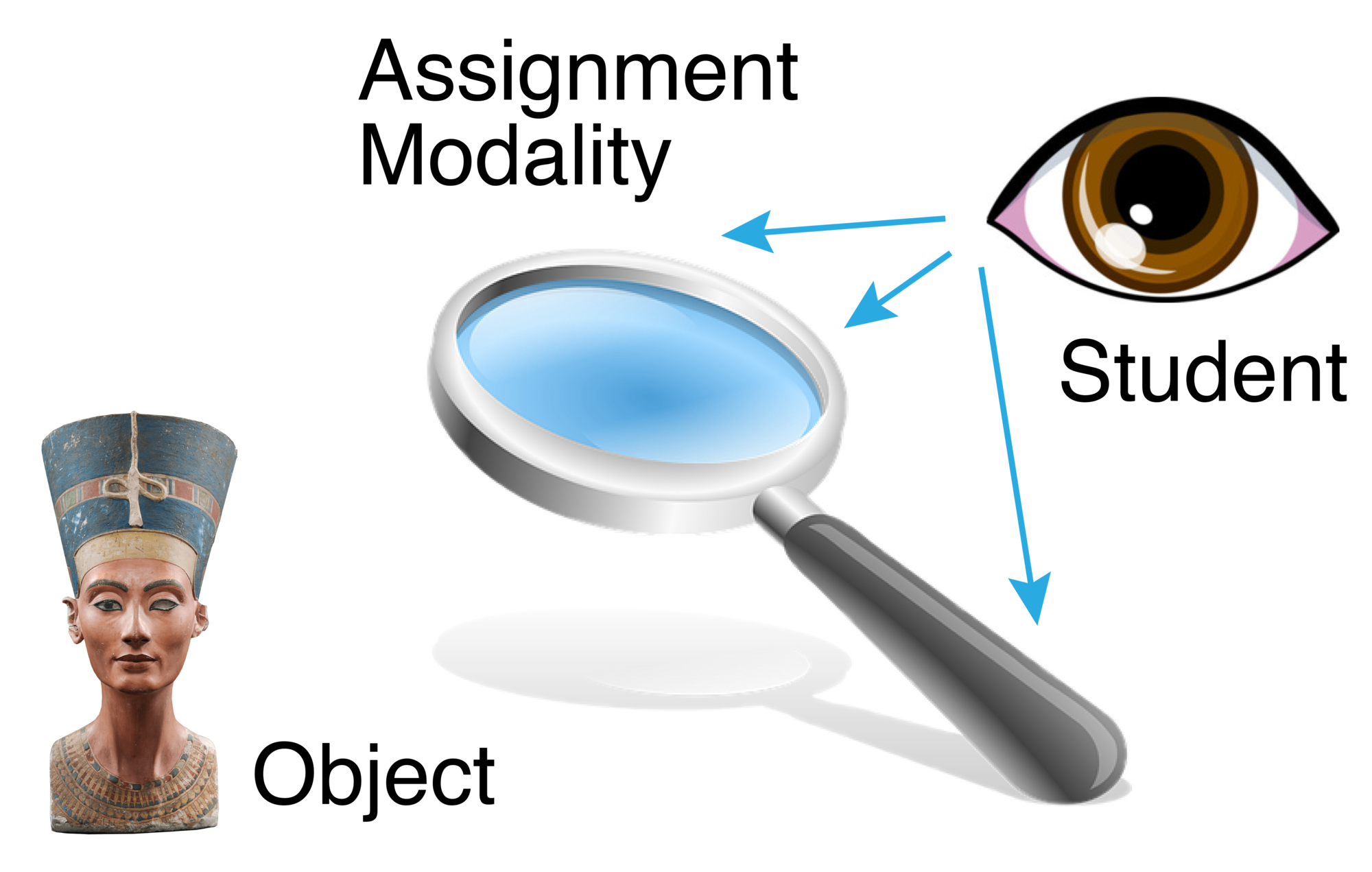At their base, all assignment prompts function a bit like a magnifying glass—they allow a student to isolate, focus on, inspect, and interact with some portion of your course material through a fixed lens of your choosing.

At their base, all assignment prompts function a bit like a magnifying glass—they allow a student to isolate, focus on, inspect, and interact with some portion of your course material through a fixed lens of your choosing.

 Often, when an instructor consults with us about an assignment prompt that seems to yield disappointing student submissions, we find exactly these kinds of inadvertent distractions—an unfamiliar genre, complicated technology, or logistical hurdle has interposed itself between the student’s attention and the assignment’s intended focus. These distractions sometimes originate in an instructor’s desire to help their students by making an assignment more "interesting," whether that means more creative or more directly related to an authentic, "real world" task. By rewriting an essay prompt as an op-ed assignment, for example, an instructor might inadvertently refocus their students' attention on the accidental qualities of op-eds—how can I mimic David Brooks’ prose? What font should I use for the masthead?—and thus divert time and energy away from the conceptual understanding the instructor was hoping to test.
Often, when an instructor consults with us about an assignment prompt that seems to yield disappointing student submissions, we find exactly these kinds of inadvertent distractions—an unfamiliar genre, complicated technology, or logistical hurdle has interposed itself between the student’s attention and the assignment’s intended focus. These distractions sometimes originate in an instructor’s desire to help their students by making an assignment more "interesting," whether that means more creative or more directly related to an authentic, "real world" task. By rewriting an essay prompt as an op-ed assignment, for example, an instructor might inadvertently refocus their students' attention on the accidental qualities of op-eds—how can I mimic David Brooks’ prose? What font should I use for the masthead?—and thus divert time and energy away from the conceptual understanding the instructor was hoping to test.
All assignments, from ungraded formative response papers all the way up to a capstone assignment, should include the following components to ensure that students and teachers understand not only the learning objective of the assignment, but also the discrete steps which they will need to follow in order to complete it successfully:
For illustrations of these five components in action, visit our gallery of annotated assignment prompts.
For advice about creative assignments (e.g. podcasts, film projects, visual and performing art projects, etc.), visit our Guidance on Non-Traditional Forms of Assessment.
For specific advice on different genres of assignment, click below: